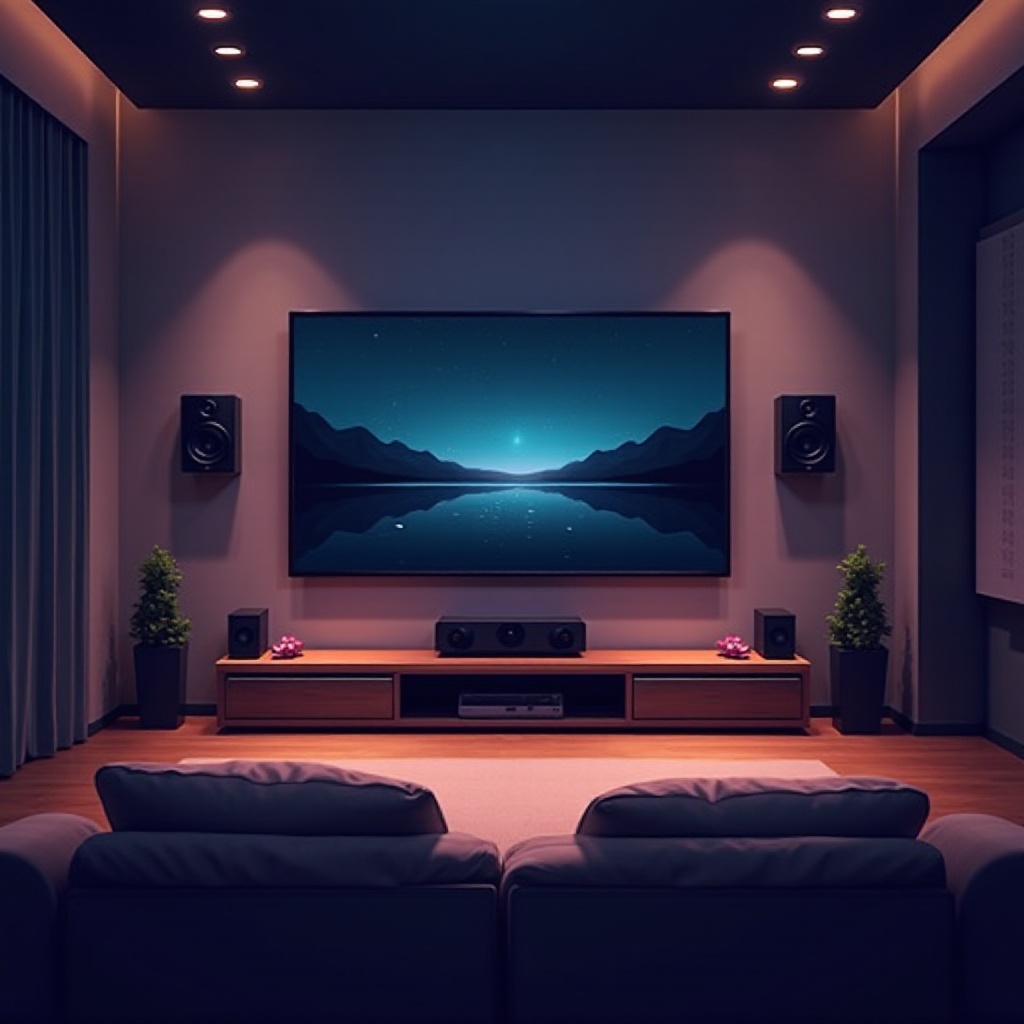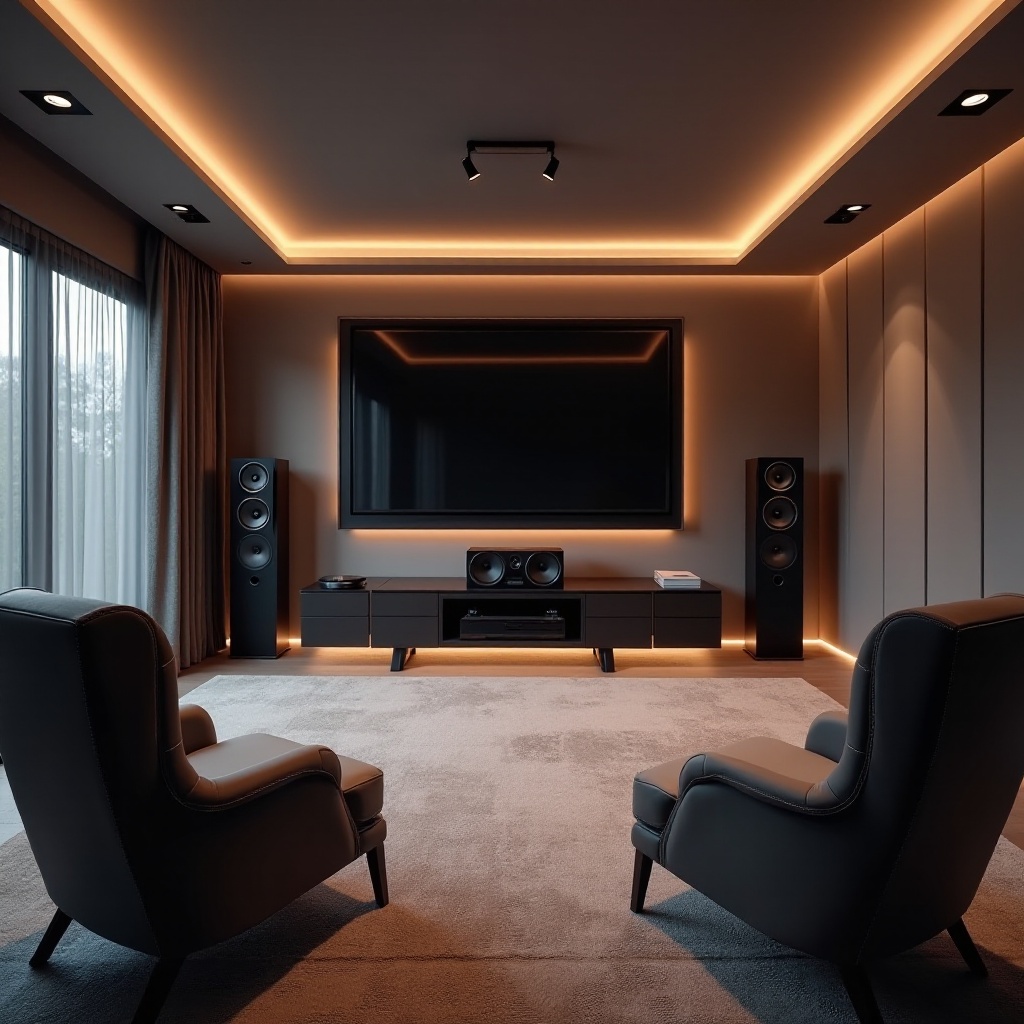Home Cinema Speaker Setup: A Complete Guide
Introduction
Elevate your movie-watching experience with a meticulously planned home cinema speaker setup. This guide delves into every aspect of achieving the ideal sound, ensuring you enjoy cinema-quality audio from the comfort of your home. We will cover everything from understanding speaker systems to optimizing setup and troubleshooting issues.

Understanding Home Cinema Speaker Systems
To attain exceptional sound, begin by familiarizing yourself with the components of a home cinema speaker system. The core elements include the amplifier, speakers, and subwoofer, each contributing significantly to the overall audio experience.
- Key Components of a Speaker System:
- Amplifier: The powerhouse that boosts and controls the audio signal sent to your speakers.
- Speakers: The devices that project sound, turning electrical energy back into audible sound.
Subwoofer: Specializes in reproducing deep bass tones, adding depth to films and music.
Different Speaker Configurations:
- 2.1 Configuration: Two speakers and a subwoofer suffice for simpler setups.
- 5.1 Configuration: Includes five speakers and a subwoofer, providing surround sound commonly found in medium-sized rooms.
- 7.1 Configuration: Adds two additional speakers to the 5.1 setup, offering richer surround sound, ideal for larger spaces.
Understanding these components helps tailor your setup to match your space and preferences, guiding your selection process.
Choosing the Right Speakers for Your Room
Armed with knowledge about the components, the next task is selecting the right speakers tailored to your room. This decision significantly influences the performance of your setup.
- Evaluating Room Size and Acoustics:
- Measure the dimensions of your room as larger spaces may require a more complex setup.
Consider room acoustics; softer furnishings can absorb sound, while hard surfaces may result in reverberation.
Matching Speakers with Home Theatre System:
- Choose speakers that complement your receiver's power output to avoid underwhelming performance.
- Balance your budget with desired audio quality, opting for brands and models that meet your needs.
The selection of appropriate speakers lays the groundwork for optimal placement, ensuring great sound without compromise.
Optimal Speaker Placement
After choosing your speakers, correct placement is key to enhancing sound quality. Properly installed speakers create a sound field that immerses you in the audio.
- Front, Center, and Surround Speaker Layouts:
- Front Speakers: Should be set at ear level, angled towards the listening area.
- Center Speaker: Must be directly above or below your display screen, focusing on delivering clear dialogue.
Surround Speakers: Positioned slightly behind and to the side of the listener for an enveloping experience.
Subwoofer Placement Tips:
- Generally best near a wall or corner to leverage acoustics for powerful bass.
- Experiment with different positions to achieve minimized distortion and augmented depth.
Thoughtful placement can transform any room into a theater, paving the way for connecting your system effectively.

Connecting and Setting Up Your Speaker System
Following successful placement, it is time to wire and connect your system, ensuring all components function harmoniously.
- Wiring Essentials and Connectivity Options:
- Purchase high-grade cables for secure and reliable connections.
Link each speaker according to its designated channel as outlined in the manufacturer's instructions.
Wireless vs. Wired: Pros and Cons:
- Wired Connections: Provide stable signals but may limit flexibility due to wire presence.
- Wireless Systems: Offer easier placement and setup, though may suffer from potential interference.
Determining the right connectivity supports seamless functioning and prepares for room-specific calibration.
Calibration and Fine-Tuning for Optimal Sound
Calibration is essential to refine your home cinema sounds. Proper adjustments ensure balanced and precise audio.
- Using Room Correction Software:
Utilize built-in software in modern receivers for automatic adjustments that align audio performance with room acoustics.
Manual Adjustments and Testing:
- Incorporate test audio during calibration to make necessary manual tweaks.
- Tools such as sound level meters can help achieve even more specific adjustments to suit your listening preference.
Fine-tuning your setup can vastly improve your home entertainment experience, leading to continuous enjoyment without common sound issues.

Troubleshooting Common Issues
Issues may arise even in the most meticulous setups. Being prepared with solutions helps maintain a trouble-free system.
- Sound Lag and Distortion Solutions:
- Verify speaker arrangement and recalibrate if needed to prevent distortions.
Inspect connections to ensure cables are intact and securely fastened.
Connectivity Problem Fixes:
- Confirm that all connected devices share the same network settings if using wireless systems.
- Regularly check for and install firmware updates on your audio equipment.
By staying proactive in troubleshooting, your home cinema setup retains its exceptional performance, ensuring a sound that captivates.
Conclusion
An effective home cinema speaker setup breathes life into your home theater by delivering top-notch audio. Understanding your audio components, selecting suitable equipment, leveraging strategic placement, and resolving sound issues are the keys to achieving outstanding sound quality. Take these steps to realize a home cinema experience that rivals professional theaters.
Frequently Asked Questions
How do I choose the right speaker configuration for my room size?
Consider room size and desired sound zones. Larger rooms may require more speakers for optimal sound coverage.
What are the main factors to consider when placing my speakers?
Focus on ear-level positioning, angling towards the listening area, and consider room acoustics for a balanced sound.
How often should I calibrate my home cinema speaker system?
Calibrate initially and adjust when the room layout changes or when sound discrepancies occur, ensuring optimal performance.




